Off the Block: 13 Out-There Apartment Designs in Japan
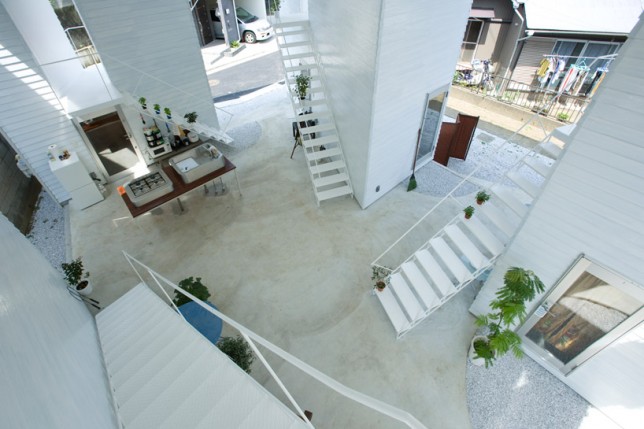
Japanese architects have come up with some of the world’s most extreme, clever and off-the-wall solutions for spatial challenges, manipulating the shapes and interior layouts of apartment buildings in unexpected ways. These creative designs make the most of small, irregular lots, combine communal and private spaces, prioritize access to the outdoors and even attempt to outsmart the aging process.
Mini Village


How can you fit three generations of a single family under one roof, while making sure everyone has their own private space? Y+M Design Office placed five individual house-shaped volumes under one giant roof for a family complex that feels like a miniature village. ‘Rain Shelter House.’ Each family member gets an enclosed, private room with access to the central communal spaces. Open-air on one side and extending all the way to the ground on the other, the roof keeps the courtyard cool and dry while maintaining air flow.
Undulating Inner Courtyard
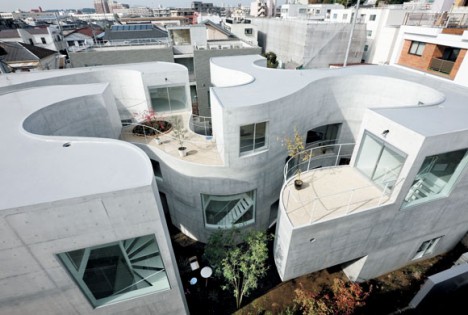
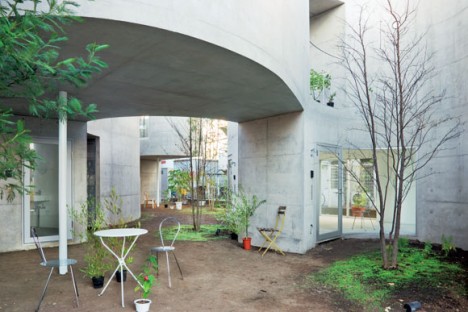
Curving shapes cut into the main concrete volume of the Okurayama Apartment in Yokohama, creating a flowing courtyard on the ground level and terraces on the second floor.
Spiral House: A Series of Staircases
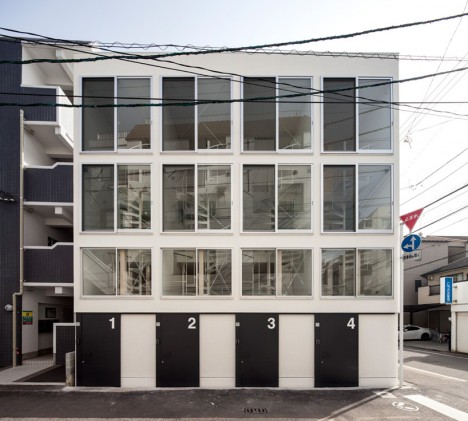
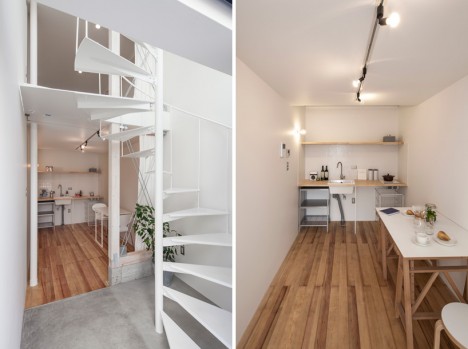
If you could stretch your living space either vertically or horizontally, which would you choose? Many people who don’t want to walk up and down staircases all the time would prefer the latter, but Spiral House by Be Fun Design takes the former approach. Four individual apartments are placed side-by-side in a rectangular structure, each occupying four levels. Spiral staircases lead from one floor to the next within each narrow and deep unit.
Asymmetric Plywood Interiors
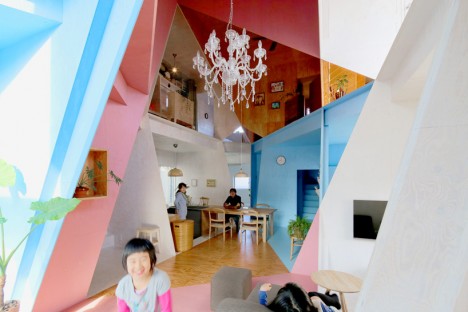
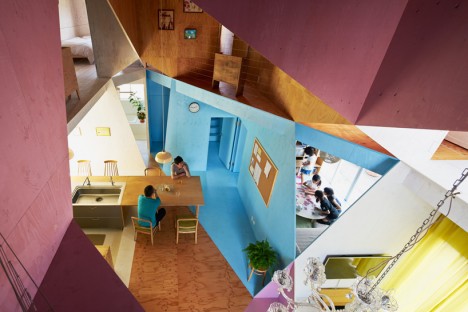
Kochi Architect Studio cut a large geometric void into an existing two-story apartment building to create a vaulted common space connecting eight interior rooms. Each of the plywood planes is painted a different color to play up the angles.
Reversible Destiny Lofts
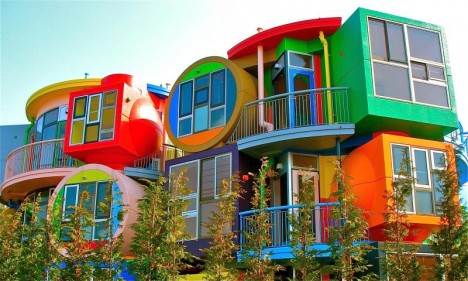
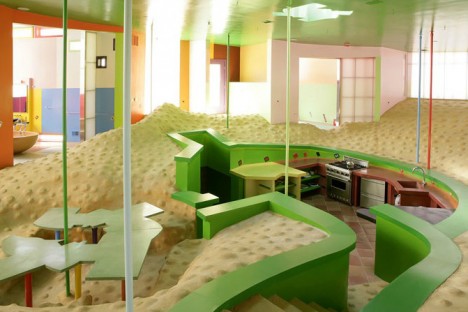
The looks of this apartment building lead to a lot of passersby murmuring “what the hell is that?” and the story behind the Reversible Destiny Lofts is even more unusual than its appearance. Japanese designer Shusaku Arakawa and his partner Madeline Gins sought to cheat death by creating a house with undulating floors and otherwise disorienting interiors that force residents to use their bodies in unexpected ways, keeping them young. They built the first version as their own home in New York, and then created a similar apartment complex in Tokyo.
Apartments for Motorcycle Owners
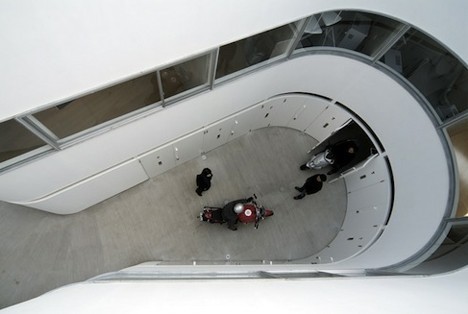
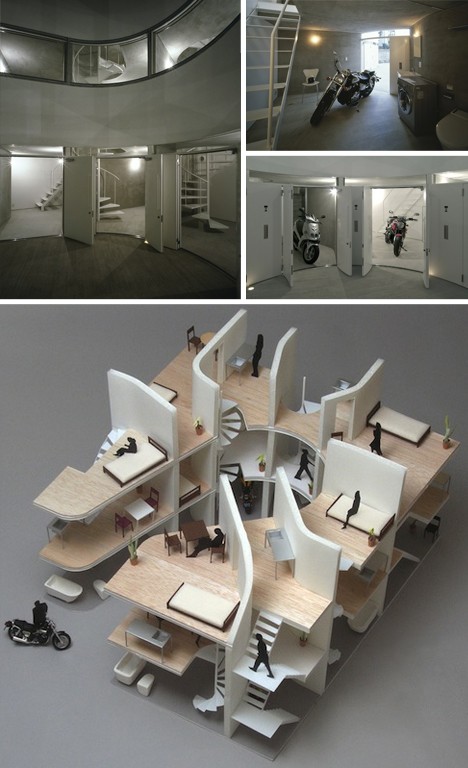
Cute little garages that are sized just right for motorcycles are arranged around a semi-circular courtyard, with living spaces on the upper levels, in this specialized apartment building in Tokyo. Each of the eight units has its own drive-up indoor parking space, and the curved form enables access to lots of daylight as well as views of the communal space.
Sandwich Apartment Straddles Alley
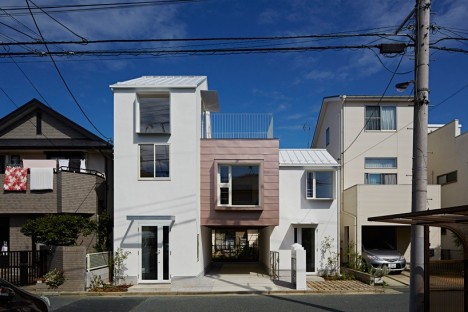
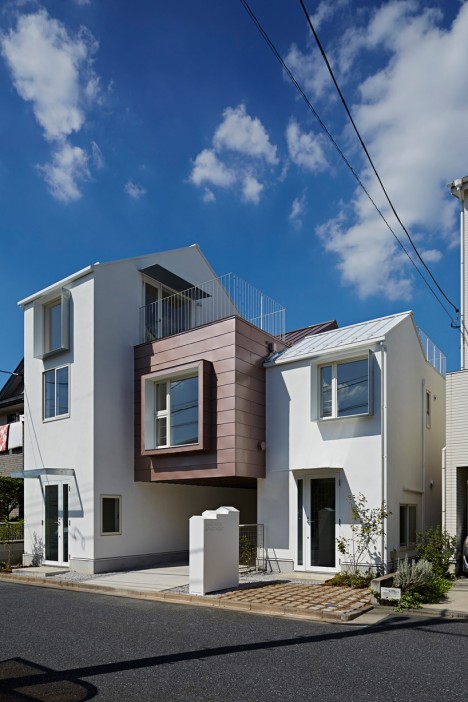
One residence was separated into three units with the owner’s unit straddling the empty space between two existing structures, seeming to hover in mid-air. This connecting unit also serves as a rooftop terrace, and the space underneath will be used for social gatherings.
Stacked House-Shaped Apartment Units
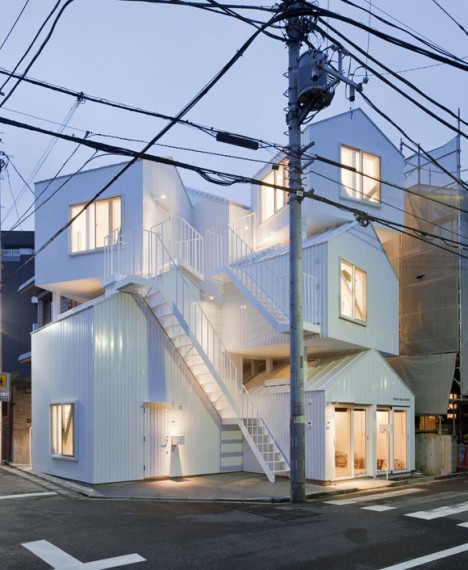
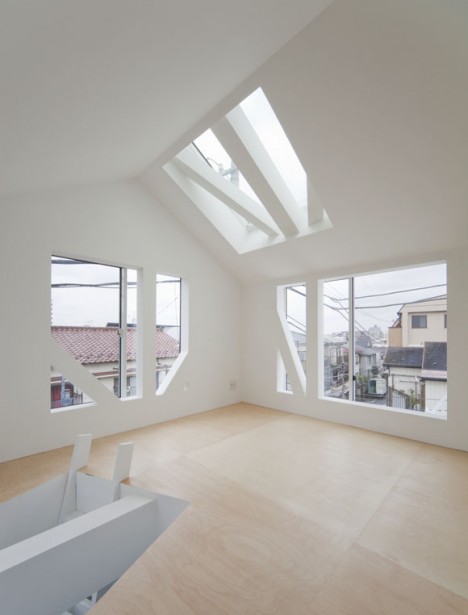
‘Tokyo Apartment’ by Sou Fujimoto Architect stacks house-shaped volumes right on top of each other in seemingly chaotic fashion. Each of the four units has two or three rooms, the upper floors accessible only by steep exterior staircases. The architect sees the building as a “miniature of Tokyo,” saying “When you go up outside stairs, you will have experience that is a wonder climbing a big mountain such as a city.”
Terraces and Transparency
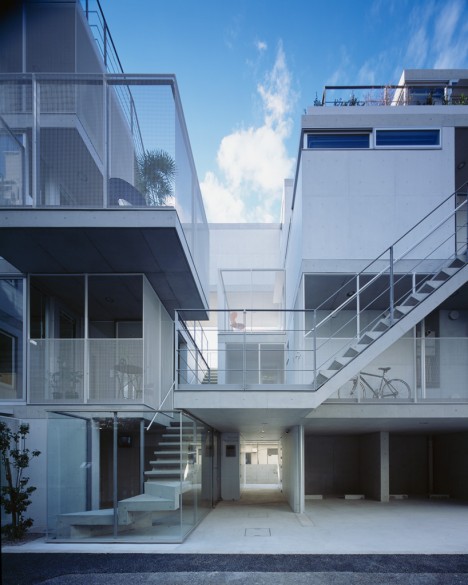

An emphasis is placed on exterior spaces with SALHAUS’ Apartment in Nishiazabu, a ten-unit complex in an area that’s dominated by individual residences and high-rise condominiums. Surrounding each of the apartments with a screened, protruding terrace offers access to the outdoors as well as a bit of privacy for the interior spaces, finding a balance between the neighborhood’s extremes.
Communal Courtyard Artist Housing
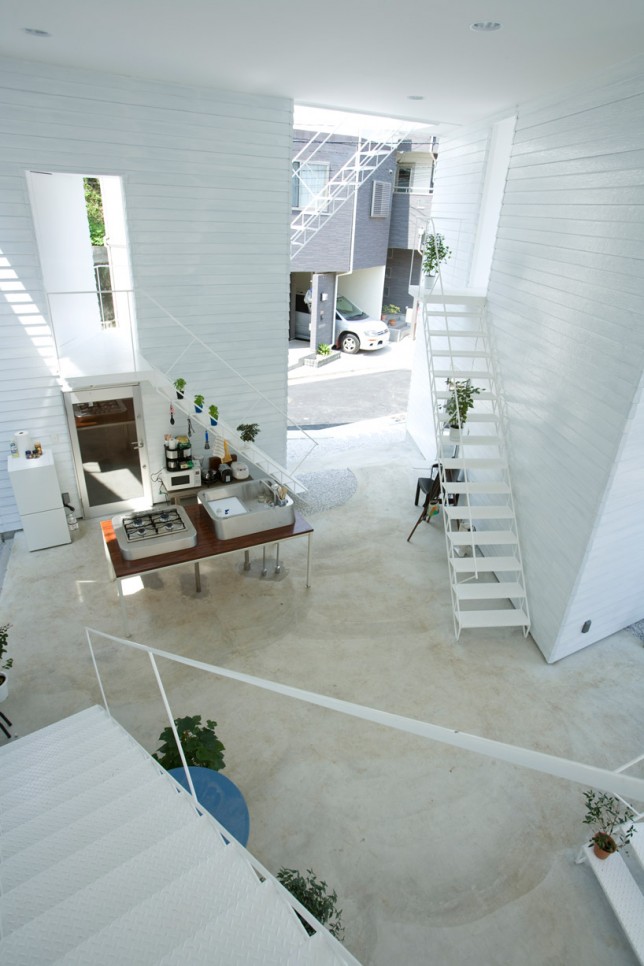
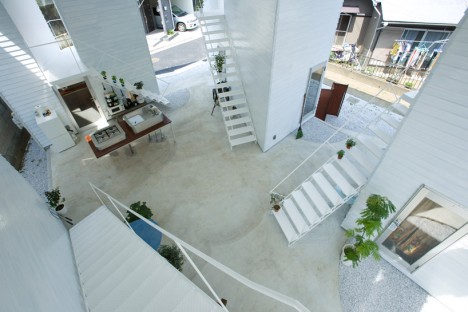
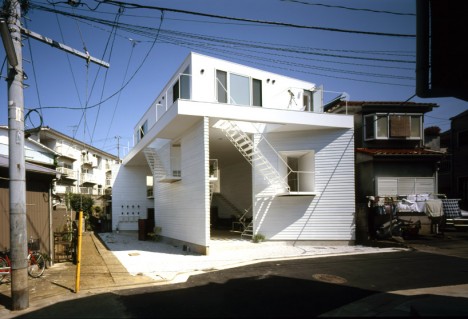
Four triangular volumes come together around a central courtyard in a pinwheel shape, creating a juxtaposition of private and public spaces within a communal apartment building for artists. The common areas offer up a washroom, kitchen and storage closets for all to use, though each of the ‘huts’ has its own private bathroom and kitchenette.
Creative Layouts in Suburban Tokyo
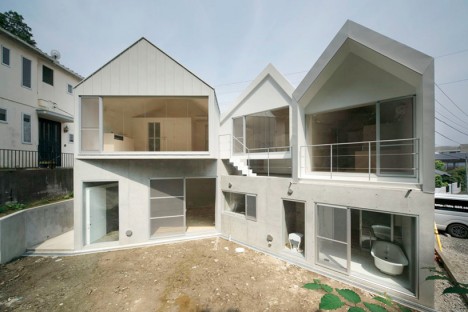
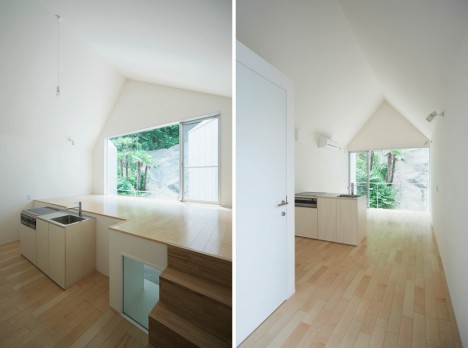
Three gabled structures almost seem as if they’ve been cut open and stitched together at the sides in this apartment building by K2YT in suburban Tokyo. The ground floor is a communal space, while three rental spaces occupy the upper floors. A series of interior and exterior spaces is created through creative layouts making use of platforms and voids.
Interlocking Studios with Rooftop Decks
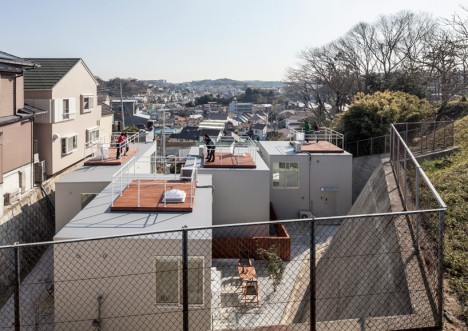
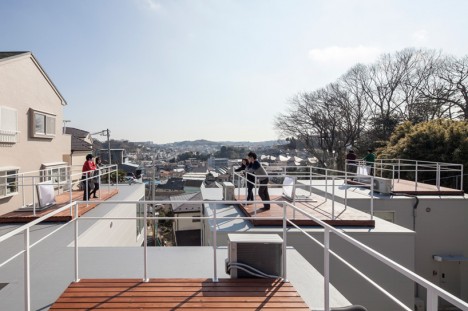
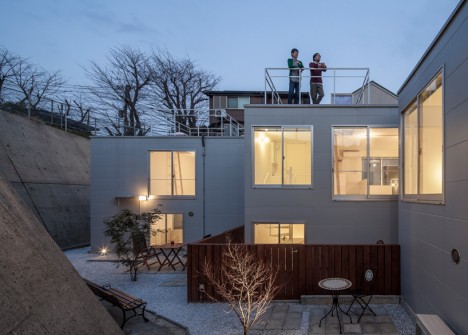
Eight apartments housed within four interlocking concrete volumes all have their own private outdoor space, whether on the ground floor or the upper level, with Be Fun Design’s Isogo House. The way these volumes are arranged creates a balance between social interaction and privacy.
Communal Housing in a Tight Space
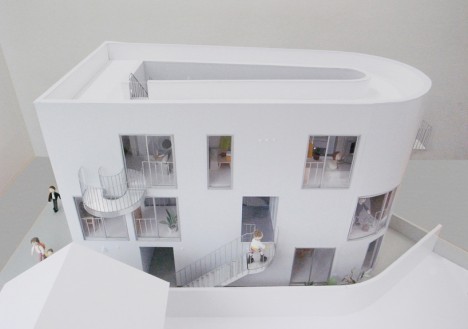
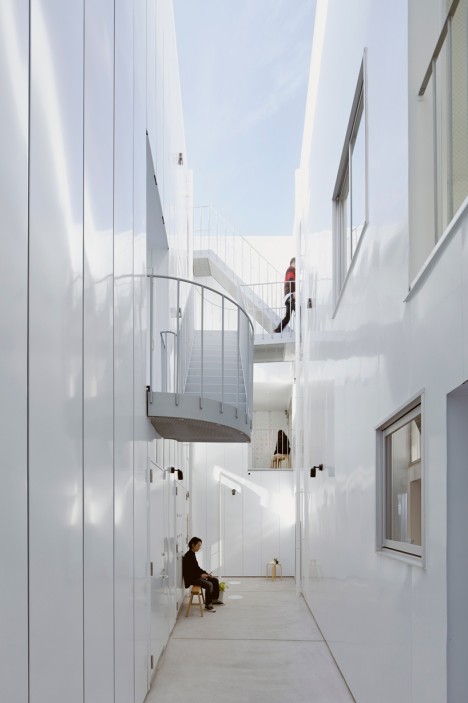

Japanese firm SPACESPACE essentially started with the plan of a typical single-family residence and stretched it out, elongating and bending it into a D shape to accommodate additional units. The shape makes the most of a narrow, irregular lot, with the open space in the center serving as a private ‘alleyway’ for the residents. The entire building, including the interiors, is painted white to reflect limited available daylight that’s partially blocked by a nearby 700-year-old tree.
Article by Steph, filed under Houses & Residential in the Architecture category.
via WebUrbanist



